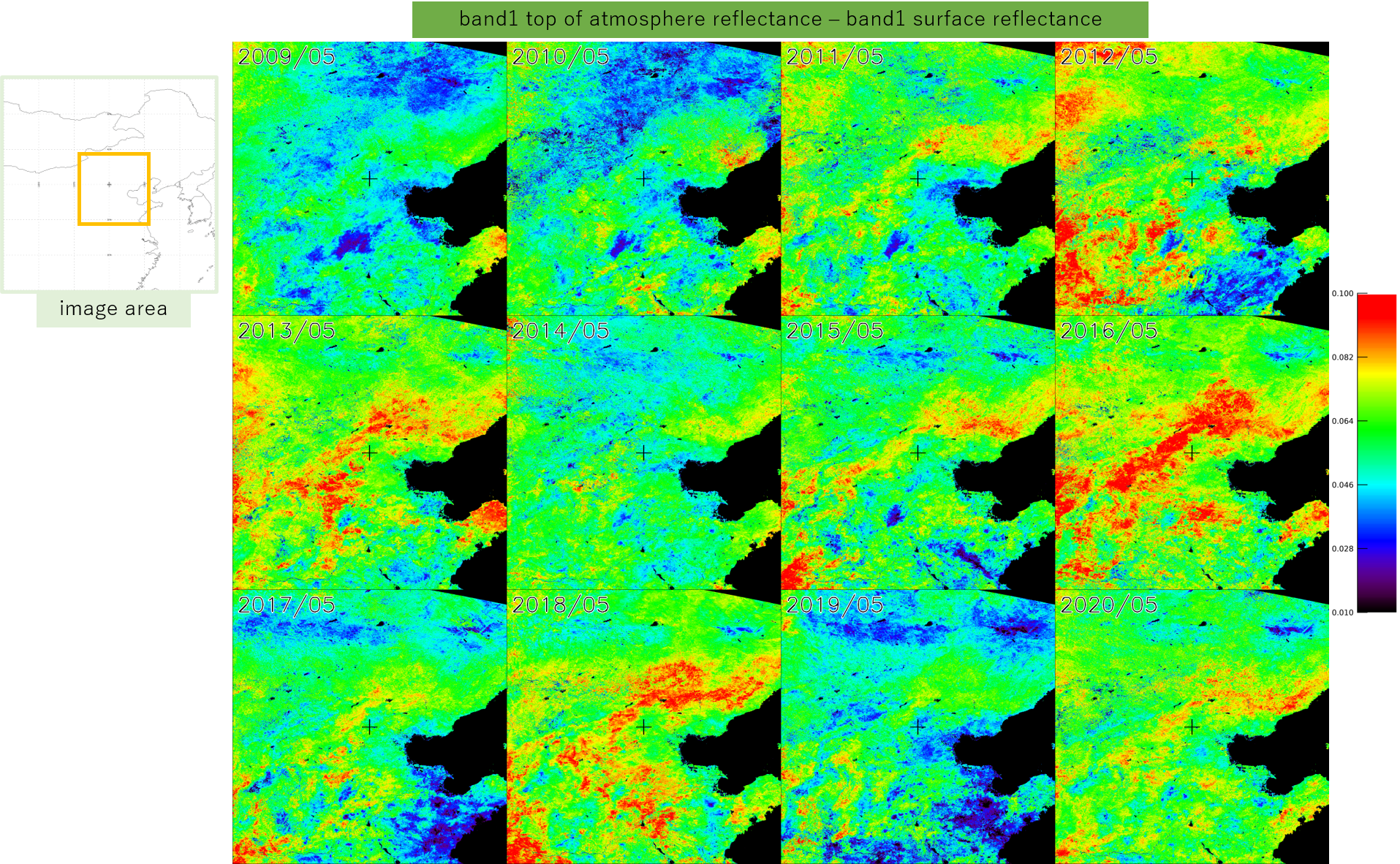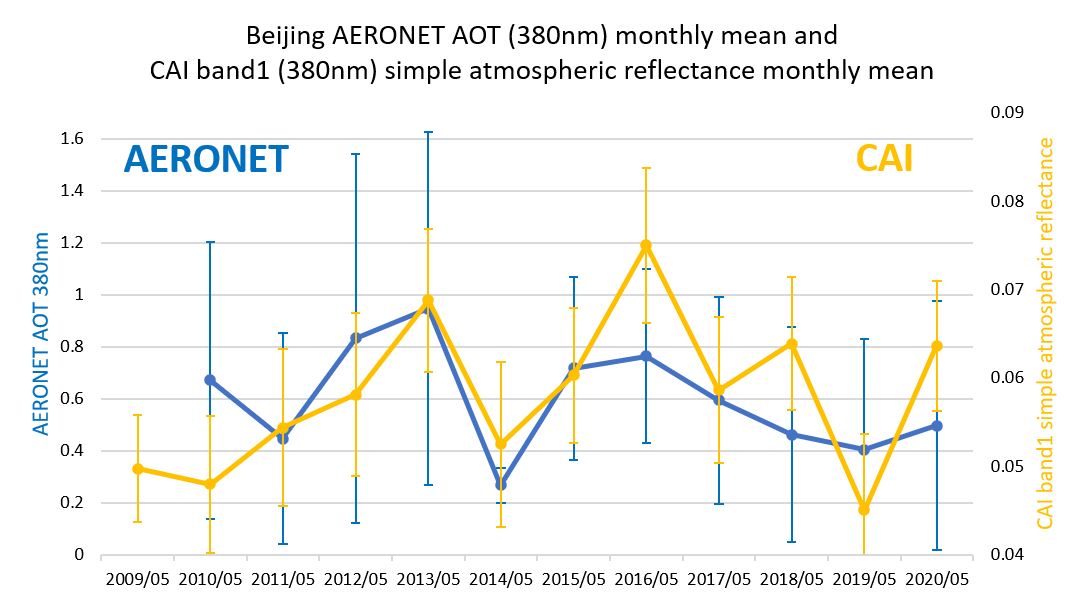Air pollution has been a serious problem in China to rapid economic growth and loose regulation. In 2013, PM2.5 was detected in Beijing, which is 40 times higher than the air quality guideline value recommended by World Health Organization (WHO). For that reason, the Chinese government implemented a strict control measure to air pollution in Beijing during the year.
In 2019, air pollution improved significantly and PM2.5 concentration decreased by about 20% from the previous year. Furthermore, air pollution had improved in early 2020 due to the lockdown caused by COVID-19, but it has become worse again in May as economic activity resumed.
Fig. 1 shows image of the monthly average of simple atmospheric reflectance(*1) in band 1 calculated from GOSAT TANSO-CAI observations around Beijing, China in May from 2009 to 2020. Since Rayleigh scattering by air molecules is significant at band 1 (380nm), this effect simple corrected by using the scattering angle and emphasize scattering by atmospheric aerosol particle. The large value means that the amount of atmospheric aerosol is large. The location of Beijing is indicated by a cross.
This figure shows that the aerosols around Beijing have been increasing and decreasing over the last 12 years. There was a large amount of aerosols around 2012 and 2013. However, the amount of aerosols was the lowest in 2019, since the air pollution control measures introduced in 2013. We can also see that aerosols increase in 2020 compared to 2019.
Fig. 2 shows the monthly average of AOT 380nm observed at AERONET Beijing site in May from 2010 to 2020 (blue) and the monthly average of simple atmospheric reflectance of CAI band 1 averaged over 0.5-degree grid region centered on Beijing (yellow). The latter is a simple method for finding the relative increase or decrease of aerosol. It can be seen that the CAI band 1 simple atmospheric reflectance generally agrees with the AERONET ground-based observation in time series.
(*1) Simple atmospheric reflectance means value of the difference between reflectance at the top of atmosphere and surface reflectance derived from a month data at band 1 (380nm) and simple corrected Rayleigh scattering by using the scattering angle. Cloud screening was carried out using the CAI-L2 product.

Fig.1 Beijing, China in May from 2009 to 2020, monthly average of simple atmospheric reflectance of CAI band1 (380nm), which were simply corrected for the Rayleigh scattering effects. Beijing is indicated by a cross.

Fig. 2 Monthly average of AOT 380nm observed at AERONET Beijing site (left axis), monthly average of simple atmospheric reflectance of CAI band 1 averaged over 0.5-degree grid region centered on Beijing (right axis).
Related article:
WHO Ambient (outdoor) air pollution
CNN.co.jp China has saved hundreds of thousands of lives by reducing air pollution, study says
REUTERS Beijing set to exit list of world's top 200 most-polluted cities: data
REUTERS China sees post-lockdown rise in air pollution: study